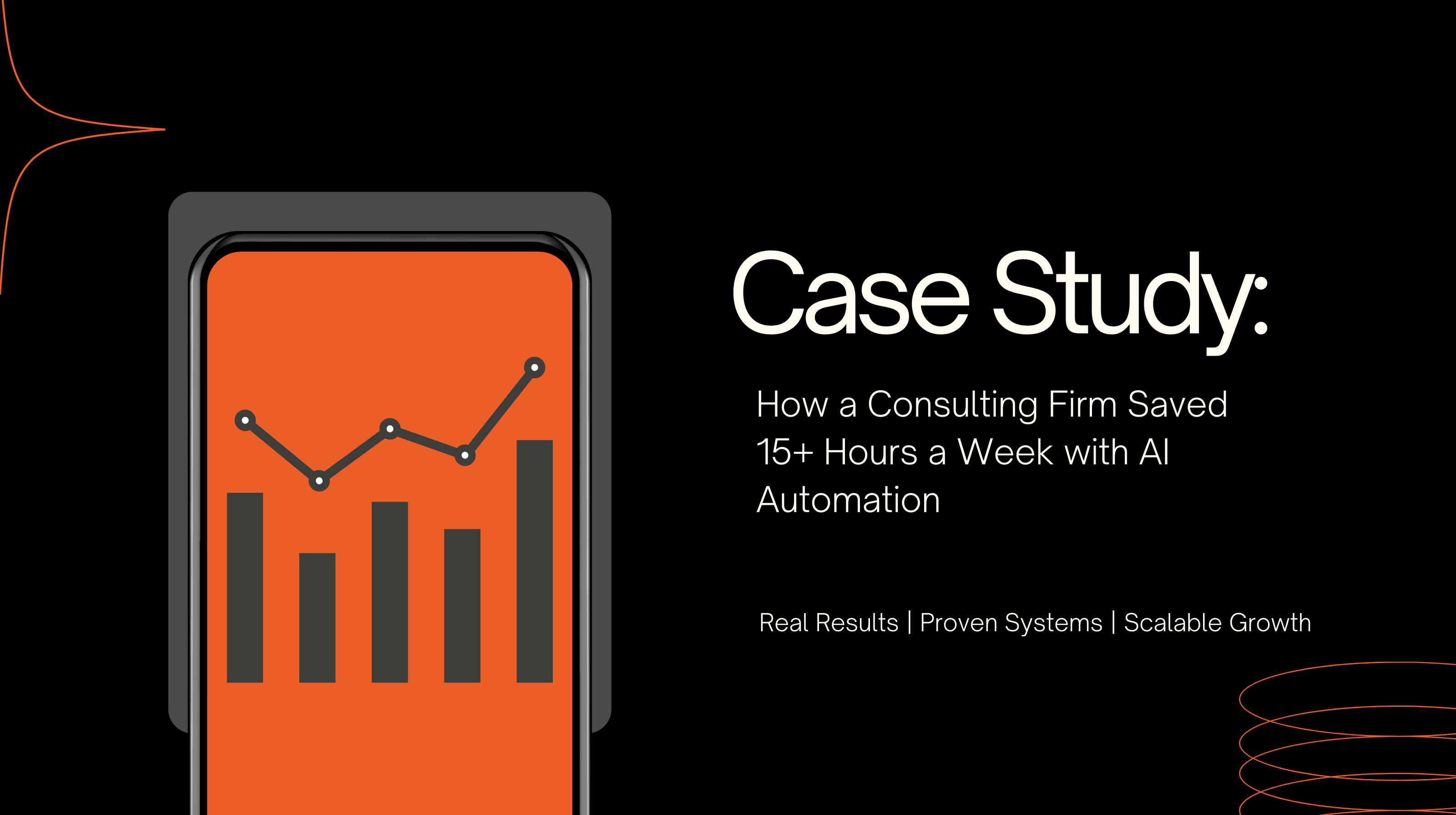Machine learning is changing how user experiences are designed, shifting from reactive interfaces to ones that predict what users need. This approach improves personalization, boosts user satisfaction, and drives business results. Companies like Amazon, Netflix, and Spotify are already leveraging these methods to tailor content and streamline interactions.
Key highlights:
Machine learning empowers businesses to refine digital experiences, making them more user-focused while delivering measurable results. Addressing challenges like data privacy and building trust in AI models will be key for long-term success.
What's for Dinner? Using Predictive UX to Help Users Decide
Machine Learning Models for Predictive UX
Continuing from our earlier discussion on machine learning's role in predictive UX, let’s dive into specific models and how they perform. The right choice of model can make or break your user experience strategy. The trick? Matching the right model to your data and prediction goals.
Common ML Models in Predictive UX
Support Vector Machines (SVM) are great for pattern recognition, making them ideal for grouping users based on interaction patterns. However, they can become computationally heavy as the dataset grows.
XGBoost and CatBoost, two gradient boosting algorithms, stand out for their high accuracy and ability to process large datasets efficiently. They’re particularly useful when dealing with missing data, a frequent issue in user behavior datasets. Plus, they provide insights into which user actions are most predictive.
Backpropagation Artificial Neural Networks (BPANN) are designed to handle complex, non-linear relationships in user behavior. They excel at uncovering subtle patterns that simpler models might miss. However, they require a lot of computational power and large training datasets.
Decision Trees are all about simplicity and interpretability. While their accuracy may be moderate, they offer visual explanations of predictions, which is invaluable when you need to present findings to stakeholders. For instance, one study showed decision trees achieving 97.98% classification accuracy, compared to Naive Bayes’ 65.00%.
Clustering algorithms like K-Means take a different approach, segmenting users into behavioral groups. This enables personalized UX strategies, moving away from a one-size-fits-all approach.
Choosing the right model depends on the specific task at hand. As the No Free Lunch theorem reminds us, no single algorithm works best for every problem.
ML Model Performance Comparison
To make informed decisions for predictive UX, it’s essential to understand how these models perform in terms of accuracy, scalability, and data requirements. Here’s a breakdown:
Accuracy can vary based on the task. Gradient boosting models like XGBoost and CatBoost often excel, while neural networks shine when there’s ample data and computational resources.
Scalability is also key as your user base grows. Logistic regression and decision trees are well-suited for real-time predictions. XGBoost, with its parallel processing, handles large datasets efficiently, though neural networks may require more significant infrastructure.
Data requirements are another critical factor. XGBoost and CatBoost can handle missing values with ease, making them highly practical for user behavior data. Decision trees work well with mixed data types, while neural networks demand clean, normalized datasets for optimal performance.
The impact of selecting the right model can be huge. Companies that integrate AI into their product design processes have reported up to a 30% boost in user engagement through more context-aware interfaces. Predictive models for content organization have also led to a 20% drop in user abandonment rates.
At Devcore, we specialize in guiding businesses through these complex model selection decisions. Using AI-powered tools and technical expertise, we help ensure that your predictive UX strategies not only meet performance expectations but also drive measurable results. These insights are the first step in optimizing your data sources and UX strategies for success.
Data Sources and Feature Importance in Predictive UX
Strong data foundations and careful feature selection are crucial for machine learning to make a meaningful impact on predictive UX. Without the right data and a clear understanding of which factors matter most, even advanced models can fall short.
Key Data Types for Predictive Accuracy
To build accurate predictions, several types of data are essential:
When companies effectively combine these data types, they can achieve impressive results. Predictive analytics has been shown to boost profitability by 15–20%. Pairing this quantitative data with qualitative insights - such as surveys, interviews, and feedback forms - provides a more complete understanding of user behavior.
Feature Importance and Optimization
Feature importance helps identify which data points have the most influence on a model’s performance.
"Feature importance is a recipe guide that shows you which ingredients matter the most and drive the results, either good or bad. Without it, you're guessing which parts of your data pull the strings." - Brain John Aboze, Deepchecks Community Blog
Selecting the right features can significantly enhance model performance. For example, a retail company working on churn prediction reduced over 100 potential features to just 20% of the original set. This not only simplified their model but also improved accuracy from 75% to 85% and reduced training time.
Understanding feature importance has practical benefits beyond model accuracy. It clarifies which user behaviors drive outcomes, making it easier to debug models and prioritize business actions. For instance, if session duration strongly predicts conversions, focusing on engagement strategies makes sense. On the other hand, if page load time is a key factor in churn, technical fixes should take priority. Optimizing these features doesn’t just refine predictions - it also delivers actionable insights that can drive real results.
There are several methods for calculating feature importance. Model-agnostic approaches work across different algorithms but can be computationally heavy. Meanwhile, model-dependent methods are faster but tied to specific algorithms. Regular cross-validation and monitoring ensure that selected features remain predictive as user behavior evolves.
Real-time data integration builds on these insights, allowing models to adapt dynamically to changing user patterns.
Real-Time Data and Dynamic Adaptation
Static models can quickly become outdated as user behavior changes. Real-time data processing allows models to stay relevant and adjust instantly.
Real-time optimization enables UX teams to adapt experiences on the fly based on current user behavior.
"One of the most exciting aspects of predictive UX analytics is its ability to optimize user journeys in real-time." - Emily Lau, UX Primer
Data streaming takes predictive analytics to the next level by enabling immediate decision-making. This approach uses the latest data to make more accurate predictions and proactively address issues before they affect user satisfaction.
For example, a mobile banking app might use real-time models to warn users about potential overdrafts based on recent spending. It could suggest helpful actions, like transferring funds or setting up alerts, building trust in the process. Similarly, e-commerce platforms can step in when users struggle with interface elements, improving the experience in real time.
Continuous streaming of data enhances prediction accuracy by incorporating the latest interactions. This helps detect emerging patterns or sudden changes, such as technical glitches or shifting user preferences. However, balancing quick responsiveness with system stability is key.
At Devcore, we specialize in setting up real-time data systems that achieve this balance. With our AI-driven tools and technical expertise, we ensure your predictive UX models stay up-to-date, delivering measurable business outcomes through smart automation.
sbb-itb-d7ea0c6
Applications of Predictive UX in Business Automation
Expanding on the concept of predictive modeling in UX, its applications in business automation highlight how user data can be transformed into systems that operate seamlessly. Predictive UX goes beyond simple personalization, creating tools that anticipate user needs, streamline workflows, and deliver measurable improvements in both customer experience and operational efficiency.
Driving Hyper-Personalization
Today's consumers expect more than basic personalization - 71% want tailored interactions, and 78% are more likely to recommend brands that deliver them. This demand has pushed companies to design systems that cater to individuals on a "user-of-one" level.
"Hyper-personalization is more than a marketing strategy - it's a fundamental shift in how we design interfaces." - Taras Bakusevych
Big names like Netflix, Amazon, and Spotify have set the standard for predictive personalization . Netflix’s recommendation engine accounts for 75% of what users watch, driven by AI-powered suggestions. Amazon curates shopping experiences with a dynamic homepage that adapts to user preferences . Spotify, on the other hand, crafts playlists and music suggestions based on listening habits, time of day, and even seasonal trends .
The payoff for businesses is hard to ignore. According to McKinsey, personalization can slash customer acquisition costs by up to 50%, boost revenues by 5–15%, and improve marketing ROI by 10–30%. Companies that excel in personalization strategies report up to 40% more revenue from tailored customer experiences.
Improving Business Efficiency with Predictive Models
Predictive UX isn’t just about enhancing customer-facing interactions - it’s also a game-changer for internal operations. By automating repetitive tasks and optimizing workflows, predictive models help businesses operate more efficiently. The 2024 AI in UX Research Report by User Interviews highlights that 90% of UX professionals now use AI during analysis, with 48% citing faster processes, 30% appreciating task automation, and 37% noting improved efficiency.
Take Vodafone, for example. Its AI-powered chatbot improved customer satisfaction by 68% while reducing call center costs by 15%. Similarly, Oracle’s analytics platform uses predictive insights to identify at-risk customers and trigger retention campaigns, cutting churn rates by 15%.
At Devcore, we specialize in creating automation systems that tackle inefficiencies. Using our Leverage Blueprint™ methodology, we analyze workflows to pinpoint automation opportunities. By implementing tools for tasks like CRM updates, email responses, and data entry, we help businesses save time and improve accuracy in day-to-day operations.
Success in automation lies in blending predictive insights with practical workflows. For instance, Microsoft Dynamics 365 uses predictive journey orchestration to analyze user behavior and optimize conversion paths, leading to a 20% increase in enterprise conversion rates. This integration of predictive modeling with business processes showcases its dual impact on user experience and operational outcomes.
Measurable Business Outcomes
The financial benefits of predictive UX automation are substantial. Deloitte reports that companies can achieve a 32% reduction in costs, with scalable implementations cutting expenses by as much as 50%. PwC adds that automating data analytics can improve efficiency by up to 40%. Businesses leveraging predictive analytics are also 2.9 times more likely to outpace competitors in revenue growth.
Atlassian offers a clear example: by incorporating AI-driven UX audits into its Jira and Confluence products, the company reduced usability complaints by nearly 30%. Companies that pair predictive models with customer feedback loops see even greater results. For example, those integrating streaming data with feedback outperform peers by 15% in model accuracy and cut time-to-market for new features by 25%. Feedback integration also boosts model relevance and user satisfaction by 20–30%.
In customer service, predictive UX delivers exceptional returns. AI-powered systems handle routine queries, improving response times and freeing up human agents to focus on complex issues. This not only enhances service quality but also lowers operational costs.
These results show that predictive UX automation isn’t just about better user experiences - it’s a strategic advantage. By improving efficiency, strengthening customer relationships, and enabling smarter decision-making, it helps businesses stay ahead in competitive markets.
Challenges and Future Directions in Predictive UX
Predictive UX is not without its hurdles. These challenges can limit its adoption and effectiveness, making it essential for organizations to understand and address them if they want to fully leverage these systems.
Main Challenges in Predictive UX
One of the biggest obstacles is data privacy and security. Collecting and analyzing user behavior data must comply with stringent regulations, especially when sensitive information is involved. Companies need to adopt transparent data practices and clearly communicate how user data is being used.
Another major issue is model interpretability. Many AI models operate like "black boxes", meaning their decision-making processes are not easily understood. This lack of transparency can erode trust among UX teams and users, particularly when interface adjustments rely on these models' recommendations.
Scalability adds another layer of complexity. As data volumes grow, real-time systems must handle massive amounts of information while maintaining quick response times. For many organizations, the infrastructure and technical expertise required to scale these systems can be daunting.
There’s also a skills gap within UX teams. Only 47% of UX professionals see value in AI tools, and 20% are dissatisfied with their current capabilities. This highlights a disconnect between what these tools offer and what teams need.
Algorithmic bias is another critical concern. When training data doesn’t represent diverse user groups, predictive models can unintentionally exclude certain segments, leading to unfair experiences, lower satisfaction, and even legal risks.
Additionally, current research limitations impact predictive UX. Many models rely heavily on historical data, which can quickly become outdated. This makes it hard to adapt to new user behaviors without frequent retraining, increasing the risk of overfitting.
Lastly, integration complexity can slow adoption. Many tools require significant technical expertise to implement, making it challenging for UX teams to seamlessly incorporate them into their workflows.
These challenges highlight the need for ongoing research and development to refine predictive UX systems.
Future Research and Developments
Despite these challenges, exciting developments are reshaping predictive UX. Advanced machine learning architectures are leading the way, with the market for machine learning expected to grow from $26 billion in 2023 to over $225 billion by 2030. Innovations like transformer models and deep learning are helping systems better understand complex user behaviors.
Multimodal machine learning is another breakthrough. By combining inputs like text, images, and sound, these systems create richer user profiles, mimicking how humans process sensory information. This allows for more accurate predictions across various channels.
Reinforcement learning is also making waves. These systems learn and adapt from real-time user interactions, improving their predictions over time. Early successes have been seen in industries like finance and healthcare.
For smaller organizations, smaller language models (SLMs) offer a promising solution. They provide competitive results while requiring fewer computational resources, making advanced predictive tools more accessible.
Edge computing is addressing scalability and speed concerns by processing data locally on devices rather than relying entirely on cloud infrastructure. This enables faster, real-time predictions and reduces dependency on external servers.
To simplify implementation, automated machine learning (AutoML) is gaining traction. AutoML tools make it easier for UX teams to use predictive systems without needing deep technical knowledge.
Efforts to tackle bias are also advancing through ethical AI frameworks. These frameworks promote transparency and explainability, ensuring that models make fair predictions and use data responsibly. This helps build trust with both UX teams and end users.
Looking ahead, cross-industry data ecosystems are starting to emerge. These secure environments allow organizations to share data and refine predictive models while maintaining strict privacy standards.
As predictive UX evolves over the next decade, it’s likely to become a standard part of user experience design. Organizations that address today’s challenges and prepare for these advancements will be better equipped to deliver experiences that truly anticipate and meet customer needs.
Conclusion
Machine learning is reshaping UX design by leveraging data to predict user needs, pushing digital products beyond the limits of traditional feedback methods.
Key Takeaways
Predictive UX powered by machine learning allows businesses to forge stronger connections with their customers. By processing massive amounts of user interaction data, these systems uncover patterns that would be impossible for human designers to identify alone. For instance, companies like Netflix use this technology to deliver personalized recommendations that keep users engaged and coming back for more.
Unlike traditional design methods, predictive UX takes a proactive approach. Instead of waiting for users to encounter issues, these systems foresee potential challenges and adjust interfaces on the fly. This not only improves user experience but also reduces the reliance on extensive A/B testing by simulating how different user segments might respond to design changes.
The business benefits are impressive. For example, an investment advisory firm cut administrative tasks by 85% through AI-driven call transcription and CRM updates. Similarly, a SaaS company improved high-quality lead conversion by 40% and saved over 70 hours each month on manual reviews.
Machine learning also enables hyper-personalization, where interfaces adapt dynamically to individual user behaviors, preferences, and contexts. This creates a sense of being truly understood, which strengthens user loyalty and satisfaction.
However, success in this space requires addressing challenges like data privacy, algorithmic bias, and transparency. Companies must balance predictive analytics with traditional UX research to ensure ethical practices in data collection and application.
These insights provide a roadmap for meaningful change.
Next Steps
To fully capitalize on these advancements, organizations need to identify their operational inefficiencies and user pain points. This is where Devcore steps in. Specializing in custom AI and automation systems, Devcore uses their proprietary Leverage Blueprint™ to pinpoint bottlenecks and design solutions that deliver measurable results. Their track record includes helping clients generate over $10,000,000 in additional revenue through AI automation.
"You don't scale by adding people; you scale by adding leverage. Software scales infinitely, runs 24/7, and never calls in sick."
By implementing tailored AI systems that integrate seamlessly with existing processes, businesses can achieve ongoing efficiency gains while delivering the personalized experiences modern users expect.
Companies that embrace predictive UX today will position themselves to not only meet but anticipate customer needs. In today’s competitive digital landscape, this proactive approach to user experience is no longer optional - it’s becoming a key driver of sustainable growth.
FAQs
How does predictive UX enhance user satisfaction and drive business success?
Predictive UX uses machine learning to anticipate what users might need, making interactions more seamless and tailored. It works by proactively guiding users, cutting down on obstacles, and enhancing overall satisfaction, which leads to greater engagement and loyalty.
For businesses, this approach delivers clear benefits: higher conversion rates, lower customer churn, and increased revenue. By analyzing and responding to user behavior in real time, companies can create digital experiences that not only meet user expectations but also drive their own objectives forward.
What are the main challenges of using machine learning for predictive UX design, and how can they be overcome?
Using machine learning (ML) in predictive UX design isn't without its hurdles. Some common challenges include the unpredictable nature of ML outputs, dependence on biased or low-quality training data, and limited resources in the systems where ML operates. On top of that, UX professionals often struggle to fully grasp the strengths and weaknesses of ML technologies, which can complicate their integration into design processes.
To overcome these obstacles, several steps can help. Prioritizing the quality and variety of training data is crucial, as is investing in tools that make ML systems easier to interpret. Additionally, providing specialized training for designers can empower them to seamlessly incorporate ML into their work. By addressing these challenges head-on, businesses can develop smarter, more intuitive user experiences driven by machine learning.
Which machine learning models work best for predictive UX design?
Supervised learning models, such as decision trees and neural networks, play a crucial role in predictive UX design. These models are great at handling large datasets and spotting intricate patterns, which makes them perfect for predicting user behavior. Regression models also find their place here, especially when it comes to forecasting trends and outcomes.
On the other hand, unsupervised models - like clustering algorithms - are used to identify user groups and uncover hidden patterns without relying on labeled data. While not as commonly used, reinforcement learning can be a powerful tool for improving user interactions over time. That said, supervised models tend to be the go-to choice because they strike a solid balance between accuracy and interpretability, making them a key component in predictive UX strategies.
Related posts
- Manual Workflows Slowing Growth? AI Solutions
- Custom AI Models for Predictive Analytics
- Using AI to Prevent Customer Churn
- How AI Enhances Real-Time Workflow Reporting
{"@context":"https://schema.org","@type":"FAQPage","mainEntity":[{"@type":"Question","name":"How does predictive UX enhance user satisfaction and drive business success?","acceptedAnswer":{"@type":"Answer","text":"<p>Predictive UX uses <strong>machine learning</strong> to anticipate what users might need, making interactions more seamless and tailored. It works by proactively guiding users, cutting down on obstacles, and enhancing overall satisfaction, which leads to greater engagement and loyalty.</p> <p>For businesses, this approach delivers clear benefits: higher conversion rates, lower customer churn, and increased revenue. By analyzing and responding to user behavior in real time, companies can create digital experiences that not only meet user expectations but also drive their own objectives forward.</p>"}},{"@type":"Question","name":"What are the main challenges of using machine learning for predictive UX design, and how can they be overcome?","acceptedAnswer":{"@type":"Answer","text":"<p>Using machine learning (ML) in predictive UX design isn't without its hurdles. Some common challenges include the <strong>unpredictable nature of ML outputs</strong>, dependence on <strong>biased or low-quality training data</strong>, and <strong>limited resources</strong> in the systems where ML operates. On top of that, UX professionals often struggle to fully grasp the strengths and weaknesses of ML technologies, which can complicate their integration into design processes.</p> <p>To overcome these obstacles, several steps can help. Prioritizing the <strong>quality and variety of training data</strong> is crucial, as is investing in tools that make ML systems easier to interpret. Additionally, providing <strong>specialized training for designers</strong> can empower them to seamlessly incorporate ML into their work. By addressing these challenges head-on, businesses can develop smarter, more intuitive user experiences driven by machine learning.</p>"}},{"@type":"Question","name":"Which machine learning models work best for predictive UX design?","acceptedAnswer":{"@type":"Answer","text":"<p>Supervised learning models, such as decision trees and neural networks, play a crucial role in predictive UX design. These models are great at handling large datasets and spotting intricate patterns, which makes them perfect for predicting user behavior. Regression models also find their place here, especially when it comes to forecasting trends and outcomes.</p> <p>On the other hand, unsupervised models - like clustering algorithms - are used to identify user groups and uncover hidden patterns without relying on labeled data. While not as commonly used, reinforcement learning can be a powerful tool for improving user interactions over time. That said, <strong>supervised models</strong> tend to be the go-to choice because they strike a solid balance between accuracy and interpretability, making them a key component in predictive UX strategies.</p>"}}]}




